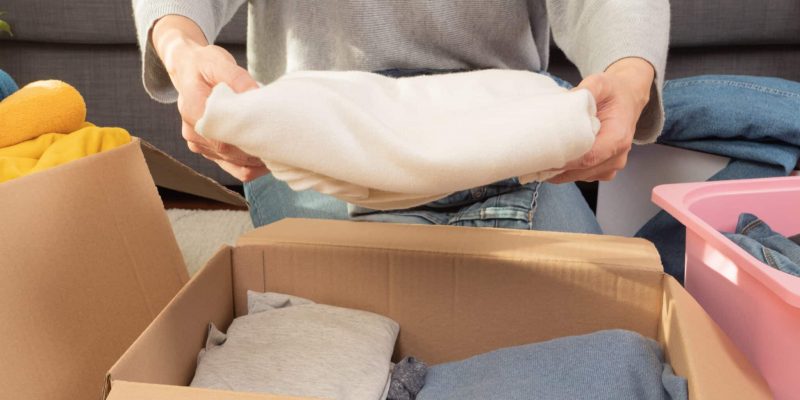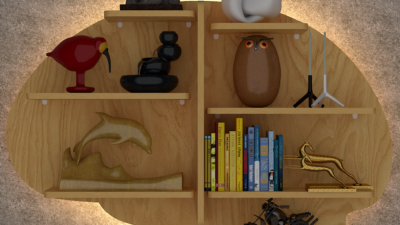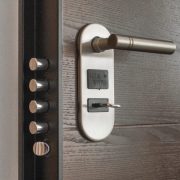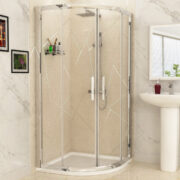Packing. The single most daunting and frustrating part of moving to a new home.
Well, you can always use a professional moving company to do this honestly ungrateful part of the job. It has a lot of benefits, and the only downside is that it will cost you a bit extra.
Still, if you want to do it yourself, that’s perfectly fine. However, you’d probably need these ten packing strategies for clothing and accessories since, otherwise, you will be just one small step away from a nervous breakdown.
So, where to begin?
Sort and Declutter
Taking some time to sort through your clothing and accessories will pay off immensely in the long run. Moving is the perfect opportunity to declutter and get rid of items you no longer need or want.
Start by going through each category of your wardrobe, such as tops, bottoms, dresses, shoes, and accessories. As you review each item, ask yourself if you’ve worn it within the past year and if it still fits your style and needs. Create three piles: keep, donate, and toss.
The “keep” pile should include clothes you love, wear regularly, and suit your new home and lifestyle.
The “donate” pile can consist of items that are in good condition but no longer serve you. Consider donating these clothes to charity or giving them to friends or family. The “toss” pile is for worn out, damaged, or no longer usable items.
Once you’ve sorted and decluttered, you’ll have a clearer idea of what you need to pack, and you won’t waste time and effort packing items that you won’t wear in your new home.
Plus, donating or giving away clothes can give you a sense of fulfilment, knowing that your pre-loved items will find new homes and be appreciated by others.
Create an Inventory and Categorise
After sorting and decluttering, create an inventory of the clothing and accessories you plan to take with you to your new home.
Categorise them by type or occasion to make the packing process more organised. This inventory can be in the form of a simple list or a digital spreadsheet, whichever you find more convenient.
Start by listing your clothing items, such as shirts, blouses, pants, skirts, dresses, and outerwear. Then, move on to accessories like shoes, belts, scarves, hats, and jewellery.
Categorising your belongings will make it easier to identify what you have, what you may need, and how to pack them efficiently.
For example, you might have an “everyday wear” category, including comfortable and casual clothing suitable for daily activities.
Another category could be “formal wear,” containing dresses, suits, or other attire for special occasions. By categorising your clothing and accessories, you’ll know exactly what to pack together and how to unpack and organise them in your new closet.
Use Suitcases and Travel Bags
When it comes to packing clothing and accessories, don’t underestimate the power of your suitcases and travel bags. These trusty companions are more than just luggage for your trips; they can be valuable storage solutions during a move.
Begin by selecting the suitcases and travel bags you’ll be using for your move. Depending on the size and number of items you have, you might need a combination of suitcases, duffle bags, and carry-on bags. Once you’ve gathered them, start packing your clothes strategically.
Using suitcases and travel bags strategically will keep your clothing and accessories organised and save space in other packing containers like boxes and bins. Plus, you’ll have the added advantage of having your essentials ready and accessible upon arrival at your new abode.
Utilise Vacuum-Sealed Bags
Vacuum-sealed bags are a lifesaver when it comes to packing clothing and accessories for a move. These ingenious bags remove excess air from your items, compressing them and saving significant space.
Begin by gathering your clothing items and arranging them in vacuum-sealed bags. The best candidates for these bags are soft, lightweight clothing like t-shirts, sweaters, and undergarments. Avoid packing heavy items or fabrics that could be damaged by compression.
Once you’ve filled the bags with your clothing, use a vacuum cleaner to remove the air from the bags. The vacuum process will shrink your clothes and create flat, compact packages that are easy to pack and transport.
By utilising vacuum-sealed bags, you’ll save space in your moving containers and protect your clothing and accessories from dust, moisture, and odours during the move.
Roll or Fold Clothes Efficiently
The age-old debate of rolling versus folding clothes for packing still stands, and both methods have their advantages.
Rolling your clothes is an excellent space-saving technique that minimises wrinkles and creases. This method works well with casual clothing, such as t-shirts, tank tops, and leggings, and it’s perfect for packing in suitcases or travel bags.
To roll your clothes efficiently, start by folding them in half lengthwise and then tightly rolling them from the bottom up. You can roll multiple items together to create a mini clothing bundle, further optimising space.
Folding clothes, on the other hand, works best for delicate fabrics or formal attire that you want to keep as wrinkle-free as possible. Items like dress shirts, blouses, and dresses should be carefully folded to avoid creasing.
Remember, some fabrics are more prone to wrinkling than others, so use your judgment when deciding whether to roll or fold certain items. For instance, knitwear and stretchy materials tend to fare better when rolled, while delicate silk or satin items may be better off folded.
Ultimately, you can use a combination of rolling and folding techniques to optimise your packing.
Use Packing Cubes or Clear Storage Bins
Packing cubes and clear storage bins are like magical organisers that transform your clothing and accessories into tidy and efficient packages. These nifty containers are handy during a move, as they help you organise and protect your belongings.
Packing cubes work exceptionally well for smaller items like socks, undergarments, scarves, and accessories. By using packing cubes, you’ll keep your items organised and easily accessible, even during the chaos of a move.
Clear storage bins, on the other hand, are perfect for larger clothing items like sweaters, jackets, and shoes. The transparent nature of these bins allows you to see the contents without opening them, which is incredibly helpful when searching for specific items after the move.
By using packing cubes and clear storage bins, you’ll add an element of organisation and simplicity to your move, making unpacking and settling into your new home a breeze.
Protect Delicate Items
Delicate clothing and accessories, such as silk blouses, dresses with intricate beading, or statement jewellery, require extra care during packing to prevent damage. To protect these precious items, take additional precautions during packing.
First and foremost, give each delicate clothing item its own space and avoid packing them with heavy or bulky items that could crush or damage them.
Use tissue paper or resealable plastic bags to wrap delicate clothing pieces individually, creating a protective barrier against potential snags or friction. Remember to use dry cleaning or professional laundry services where necessary.
For jewellery, invest in small jewellery pouches or use resealable plastic bags to keep pieces separated and untangled. Consider placing these pouches or bags inside larger accessory bags or padded pockets within your luggage for added protection.
For hats, stuff them gently with soft items like scarves or socks to help them maintain their shape during the move. Alternatively, nest smaller hats inside larger ones to save space and protect their structure.
By taking these extra precautions, you’ll ensure that your delicate clothing and accessories arrive at your new home in pristine condition, ready to dazzle and shine in your new closet.
Utilise Small Spaces and Gaps
When packing your clothing and accessories, making the most of every available nook and cranny is essential. This means utilising small spaces and gaps between larger items to fit in more of your belongings.
One effective way to do this is by using small items like socks or scarves to fill the gaps in your packing containers. For instance, stuff socks inside your shoes to keep them in shape and utilise the empty space inside the footwear.
Similarly, use the hollow part of a rolled-up belt or small accessories to fill gaps between other packed items. These small spaces might seem insignificant, but they can significantly maximise your packing efficiency.
Label and Organise Boxes
If you’re using boxes to pack your clothing and accessories during your move, proper labelling and organisation are essential to avoid confusion and make unpacking a breeze.
For added organisation, colour-code your boxes using stickers or markers. This can be particularly helpful if you have multiple people helping with the move or if you’re hiring professional movers. For instance, use red labels for boxes that contain clothing, blue for kitchen items, and green for bathroom supplies.
Labelling and organising your boxes will streamline unpacking and make settling into your new home a smoother and more enjoyable experience.
Keep Essential Clothing Easily Accessible
When it comes to packing clothing and accessories for a move, consider keeping essential items easily accessible. These are the clothes you’ll need immediately upon arriving at your new home, ensuring that you’re prepared and comfortable during the first few days.
Include items like a change of clothes for the first day, comfortable sleepwear, toiletries, and any other necessities you’ll need before you have time to unpack fully.
Keep this bag or suitcase with you during the move, or make sure it’s placed in a prominent spot in your moving truck or storage area. By doing so, you won’t have to dig through all your packed belongings to find what you need when you arrive at your new home.
Some final words
There you have it. Use this guide to pack your clothes and accessories, and you will see that moving can be a bit easier. Don’t think, however, that this will make all other problems disappear.
Moving is one of the hardest endeavours we take in our lives, and God knows it’s nerve-wracking. Still, you can always find professionals to do everything and just enjoy your new home. After all, it’s only money.














Comments